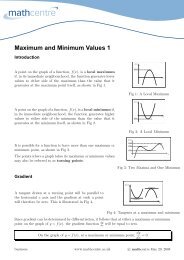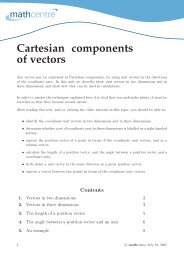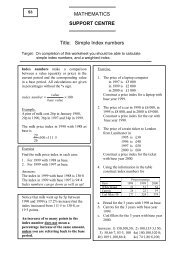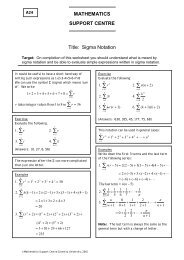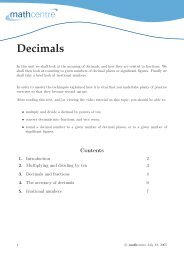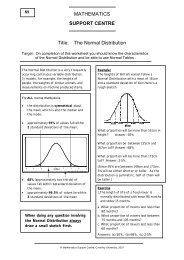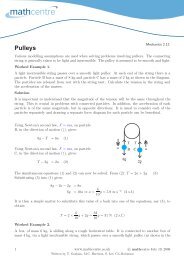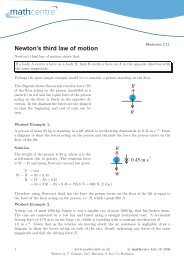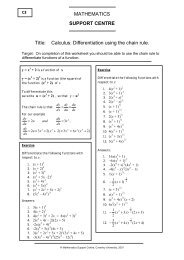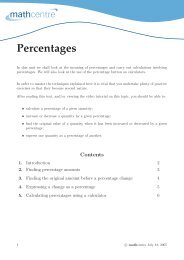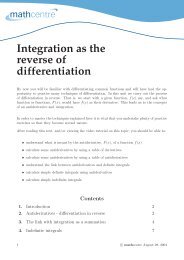Sigma notation - Mathcentre
Sigma notation - Mathcentre
Sigma notation - Mathcentre
You also want an ePaper? Increase the reach of your titles
YUMPU automatically turns print PDFs into web optimized ePapers that Google loves.
Solution<br />
Notice that, in this example, there are 6 terms in the sum, because we have k = 0 for the first<br />
term:<br />
5∑<br />
2 k = 2 0 + 2 1 + 2 2 + 2 3 + 2 4 + 2 5<br />
Example<br />
6∑<br />
1<br />
Evaluate r(r + 1).<br />
2<br />
Solution<br />
r=1<br />
k=0<br />
= 1 + 2 + 4 + 8 + 16 + 32<br />
= 63 .<br />
You might recognise that each number 1 r(r + 1) is a triangular number, and so this example<br />
2<br />
asks for the sum of the first six triangular numbers. We get<br />
6∑<br />
r=1<br />
1<br />
2 r(r + 1) = ( 1<br />
2 × 1 × 2) + ( 1<br />
2 × 2 × 3) + ( 1<br />
2 × 3 × 4) + ( 1<br />
2 × 4 × 5)<br />
+ ( 1<br />
2 × 5 × 6) + ( 1<br />
2 × 6 × 7)<br />
= 1 + 3 + 6 + 10 + 15 + 21<br />
= 56 .<br />
What would we do if we were asked to evaluate<br />
n∑<br />
2 k ?<br />
k=1<br />
Now we know what this expression means, because it is the sum of all the terms 2 k where k<br />
takes the values from 1 to n, and so it is<br />
n∑<br />
2 k = 2 1 + 2 2 + 2 3 + 2 4 + . . . + 2 n .<br />
k=1<br />
But we cannot give a numerical answer, as we do not know the value of the upper limit n.<br />
Example<br />
4∑<br />
Evaluate (−1) r .<br />
Solution<br />
r=1<br />
Here, we need to remember that (−1) 2 = +1, (−1) 3 = −1, and so on. So<br />
4∑<br />
(−1) r = (−1) 1 + (−1) 2 + (−1) 3 + (−1) 4<br />
r=1<br />
= (−1) + 1 + (−1) + 1<br />
= 0 .<br />
c○ mathcentre July 18, 2005 4



